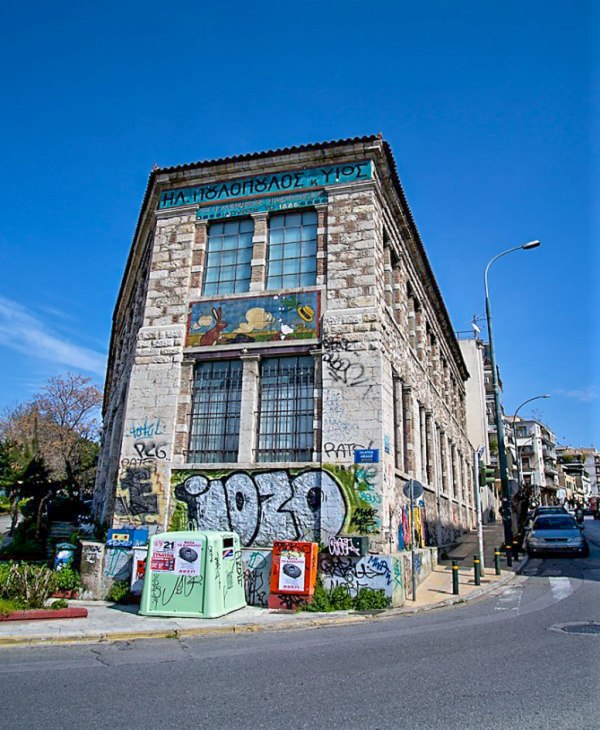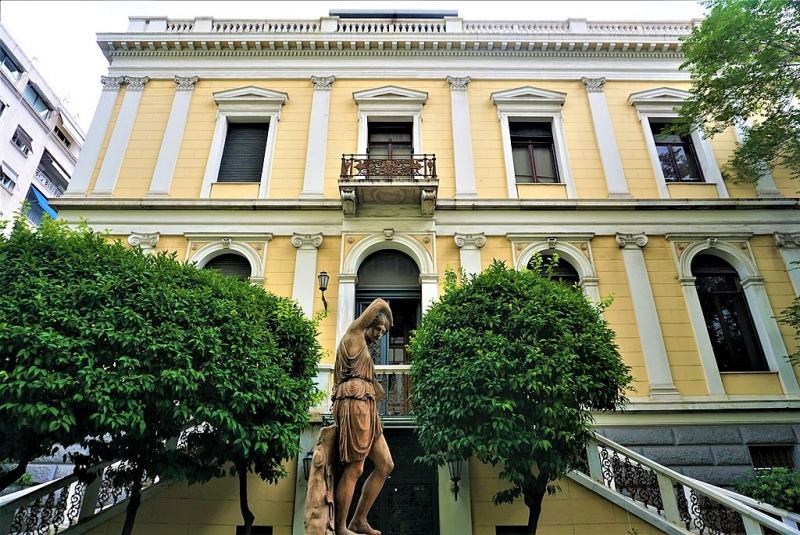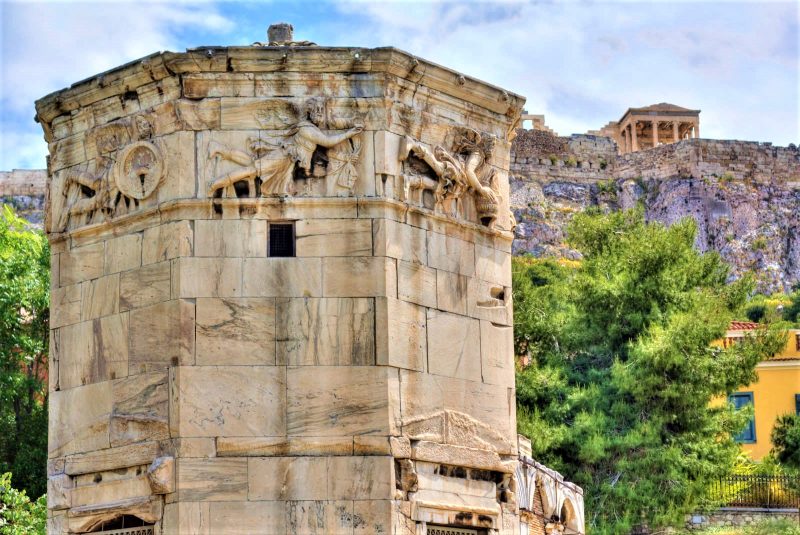



We Need Your Support!
We want to remind you that Athens by Locals is reader-supported. By booking tours, hotels, tickets, and other travel services through the links on our website, you can help us continue providing valuable content and information. Note that we receive a small commission only if you make a booking using our links at the time of your visit. So, if you're not quite ready to book yet, you can save this post and the links and return to make your booking when the time is right. We genuinely appreciate your support and are thrilled to have you in our travel community. Please don't hesitate to reach out if you have any questions or need assistance. Happy travels!
Every city has its hidden gems and Athens is no exception. In fact, there are so many lesser-known attractions and secret spots in the city that you will have trouble choosing which ones to fit into your itinerary.
If you’ve already visited Athens’ ancient sites and tourist areas or are just looking for a more authentic experience in the Greek capital, keep reading. This list with 16 unusual places to explore is all you need to visit Athens off the beaten path and explore the city like a local.
Akadimia Platonos is rarely included in the top things to do in Athens’ lists, yet is a place of great historical significance.
In this neighborhood that lies in the northwestern part of Athens’ city center, the renowned philosopher Plato founded its academy in 380 BC.
Nowadays, there is an archeological park signifying the place the historical figure used to teach his students and a small interactive museum.
Visitors can learn more about the philosopher’s life and ideas; the entrance is free.
Punctuated with trees and benches, the park is also a hangout for people living in the neighborhood and locals from other areas.

Located close to Thissio, the industrial building that once housed the oldest hat factory in the country is one of Athens’ best-hidden spots in plain sight.
Founded in 1886 by Ilias Poulopoulos, the renowned factory remained open for half a century and closed its doors a few years after the end of World War II.
Boasting magnificent industrial architecture, the stone building was declared a monument and restored by the government in 1988.
The remaining part of the former factory has now been transformed into a cultural center, which hosts permanent and temporary exhibitions.

The Queen’s Tower (Pyrgos Vassilissis) in Attica’s western suburbs is one of the most overlooked landmarks in the Greek capital.
The French architect Florimond Boulanger designed the Gothic architecture building, and its construction was completed in 1854.
A spectacular garden spans in front of the small tower and is decorated with statues and fountains.

On Souidias Street 61 (map) in the upscale Kolonaki district lies one of Athens’ most important hidden gems: the Gennadius Library.
Founded in 1926, four years after Joannes Gennadius donated 26,000 documents and volumes, Gennadius Library is considered one of the most important libraries worldwide.
It houses over 138,000 book volumes as well as artworks, manuscripts, and archives. Aside from its remarkable collection, the Gennadius Library is well-known for hosting cultural events, concerts, and exhibitions.

Athens Botanical Garden often falls under tourists’ radar as it’s the National Gardens of Athens right next to Syntagma square that draws all the attention.
And while no one can argue that the National Gardens is a sight to miss, Athens Botanical Garden has a unique beauty.
Situated in Attica’s western suburbs in the Haidari area (click for map), Athens Botanical Garden spans 186 hectares.
Home to over 500 species of flora, including native plants mentioned in Greek mythology, the majestic garden is one of the largest of its kind in the Eastern Mediterranean.

Located at 45 Agion Asomaton street in the Psyrri district, the House of the Caryatids boasts a legacy of timeless beauty, intricate detail, and architectural grandeur. Built in 1880 as a private residence, this neoclassical gem commands attention with its two caryatid sculptures – columns of women- gracefully supporting the first-floor balcony.

Over the years, the House of the Caryatids has been celebrated as one of the city’s most magnificent neoclassical buildings, a true work of art that masterfully blends ornate decoration and intricate details. This building has not gone unnoticed by the art world, as two famous works – a painting by Yannis Tsarouchis and a photograph by Henri Cartier-Bresson – have helped to cement its place in history, captivating audiences with its majesty and elegance.
When you’re thinking of the hills you must visit on your trip to Athens, the first to come to mind are Lycabettus Hill and Philopappos Hill.
These are unquestionably two of the most beautiful places in the Greek capital, both drenched in history.
If, however, you’re looking for a peaceful place away from the tourist crowds, you must look a bit further. And more precisely to the Exarchia neighborhood where the beautiful Strefi Hill stands 150-meter above sea level.
Dotted with trees, paths, and benches, Strefi Hill is the perfect spot for a tranquil walk away from the city’s hustle and bustle. Plus, the view from its summit is wonderful.

Those fascinated by astronomy should definitely add the National Observatory of Athens to their to-do list.
The National Observatory of Athens features three visitor centers located in Penteli, Kyronerion, and Thission. The latter is located on the Hill of the Nymphs in a building designed in the mid-19th century by the Danish architect Theophil Hansen.
A Geoastrophysics Museum and the library of the Observatory are open to visitors eager to explore the long history of Greek astronomy.
Different types of scientific instruments dating to the 19th and 20th centuries and the first optical telescopes of Greece are also displayed in the observatory’s hall.

Even though many people have passed by Hadrian’s Reservoir, few have noticed it or even know that it is an ancient hydrological landmark.
Set in the Kolonaki area at the western base of Lycabettus Hill, Hadrian’s reservoir nowadays sits beneath the outdoor Cinema Dexameni.
When it was built in the 2nd century AD, it was the largest infrastructure project to date, providing water supplies to the area. Today, only two column bases remain at the site, and visitors cannot enter the reservoir building.

Often overlooked as an attraction, Lycabettus Hill is one of the highest points of Athens, standing at 277 meters above sea level in the upscale neighborhood of Kolonaki.
To get there, you can either walk up the circular path or choose to get on the funicular railway that goes all the way to the top – but unfortunately, in a closed tunnel, so you won’t be able to enjoy the view during the ride.
If you choose to walk, bear in mind that the path is quite steep and that climbing all the way up the hill can prove to be a challenge, especially in the summertime when the sun is hot.

Nevertheless, the amazing views from the hill of Athens and some of the most famous attractions like the Panathenaic Stadium and the Acropolis will surely compensate you.
On the top, you will also find the charming church of Agios Georgios (St. George), a small cafe, and a luxurious restaurant with impeccable views.

This is one of the hidden gems of Athens that tourists sometimes pass by without ever realizing. This 11th-century Byzantine church is located in the most famous area of Athens, the renowned Plaka.
It’s a quintessential example of Byzantine architecture and a monument that reflects the erstwhile glory of the city in an era long gone with lavish decorations and gold artifacts shining bright on its walls.
Surprisingly enough, the church is still functioning, and ceremonies still occur there. If you’re lucky, you might even witness a traditional Greek wedding ceremony while you’re visiting.

Is a museum dedicated to coins really worth a spot on this list? Well, we really think it is.
The Numismatic Museum is located right between Syntagma Square and the Academy of Athens, and it’s ideal for a quick pitstop and a quick tour of the exhibits.
It features several different currencies from different periods of the city and fascinating jewels, mints, gems, and seals.

And the best part? Right outside the museum, you will find a small, cozy cafe that is like a tiny oasis in the hustle and bustle of the busy city center, where you can relax and catch your breath under the cool shade before resuming your sightseeing itinerary in Athens.
Located just a few minutes from Kolonaki Square, the Zoumboulakis Gallery was founded in the mid-’70s and has been one of Athens’s most prominent art spaces ever since.
Through the decades, it has hosted exhibitions of great historical importance by both Greek and foreign artists.
Its recently renovated building houses contemporary art exhibitions by local and internationally established artists in several different viewing rooms with unique themes.

You will not easily find this attraction featured in online guides and magazines unless you are prepared to dig deep.
The Tholos Tomb of Acharnes (or the so-called Tholos Tomb of Menidi) is located in the suburb of Menidi, which lies approximately 30 minutes away from Syntagma.
The tomb was discovered in the 19th century by German archaeologists and remains one of the best-preserved tombs of Greece, even though it dates back to the 13th century BC.
This impressive monument is tucked away in a lush park, and to get inside, visitors get to walk the 28-meter entrance of the tomb before entering the awe-inspiring burial chamber.

Many of the archaeological finds from the tomb can also be found in the National Archaeological Museum of Athens.
This attraction is definitely not recommended for the faint of heart.
This peculiar wax museum of dermatological and venereal diseases in the area of Agios Nikolaos is located inside the Andreas Syggros Hospital.
Naturally, it is dedicated to the science of medicine, and it features over 16 thousand pieces and wax models depicting skin conditions and STDs based on the symptoms observed in the hospital’s patients during a period of more than forty years.
The exhibits were originally used as training material for new doctors until they were transformed into one of the strangest museums in Athens.

Founded in 1837, a few years after Greece gained its independence and the modern state was born, the First Cemetery of Athens is the city’s official and oldest cemetery.
It’s located very close to the Panathenaic Stadium and the Temple of Olympian Zeus, which is probably the reason behind the misconception that the cemetery also dates back to ancient times.
The First Cemetery of Athens is the final resting place of popular politicians, artists, musicians, poets, and other prominent figures of modern Greek culture.
It boasts majestic Neoclassical and Romantic architectural elements and a few famous sculptures.
The most famous among them is “I Koimomeni” (The Sleeping Girl), which depicts a dead young girl crafted by Yannis Chalepas, an artist whose tomb is also found in the cemetery.

The Tower of the Winds is not like the other attractions you’ll see in Athens.
Most monuments in the city center, like the Acropolis or the Temple of Olympian Zeus, bear cultural and religious significance.
Yet, the Tower of the Winds was built in the 2nd century BC for a different purpose. It’s one of the few scientific buildings still surviving in the city.
You’ll find it within the Roman Agora and you’ll immediately notice that it’s more than a decorative tower.
It features sundials, a weather vane, and an hourglass water clock that make it the very first meteorological station in the world.
The octagonal building is made from the famous Pentelic marble, with each side representing a different direction (much like a compass), and gets its name from one of the eight ancient Greek Gods of wind.

While Athens’ popular landmarks and hip neighborhoods should definitely be on your to-do list, numerous secret attractions are worth your attention.
From peaceful gardens to architectural masterpieces, these unusual places are definitely going to impress you and show you how Athens is off the beaten path. Plus, it’s always nice leaving the tourist crowds behind for a while and seeing the city like a local.
A Quick Reminder:
Remember that Athens By Locals is here to guide you with planning the perfect trip to Athens and help you every step along the way. If you didn’t found what you’re looking for, or need any recommendations about your trip to Athens, feel free to contact us and we will do our best to help you. Please be as more detailed as possible regarding your subject so as to help you better.
If you like what you read please scroll down at the end of this page and subscribe to Athens By Locals so next time to receive more articles like this straight forward to your email. Join us on Facebook for comments, photos, and other fun stuff. If you enjoy this article please share it with your friends on Facebook.
Copyright © 2024 Athens By Locals © All rights reserved. No part of this site may be reproduced without our written permission.
Images owned by Athens By Locals. Image Banks or Companies promoted.